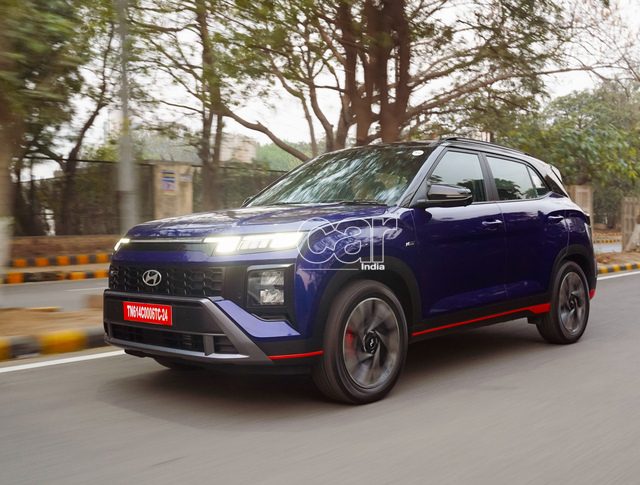
Is India ready to say good-bye to fossil fuel? Not completely, maybe, but it’s high time we prepared our nation for better utilisation of energy and, more importantly, for clean energy.
One company that has been taking baby steps towards a cleaner future is our very own Mahindra Reva. The Bengaluru-based electric vehicle (EV) manufacturers had displayed their latest concept, the Reva NXR, at the 2013 Auto Expo, which has now become a reality in the shape of the e2o (ee-two-oh), which roughly translates into ‘energy to oxygen’.
Before the test drive, I’m handed a smart phone pre-loaded with the e2o app and while the company executive runs me through the product presentation, I tap on the phone’s screen to switch on the EV’s air-con, bringing the cabin to a more suitable temperature. The phone also shows a driving range of 98 per cent on the 48-volt lithium-ion battery. Enough for my short test drive. The app can also fetch information like the e2o’s location, range, charging points and remote lock/unlock, et cetera. Pretty slick. Connect the Mahindra to any 15-amp plug-point and it takes about five hours to get fully charged and be ready for a range of 100 kilometres under ideal conditions.
I am excited as this is the first four-seater EV of our country. This two-door hatch follows the practical and popular tall-boy design. It does make for easy ingress and egress, but, in the process, it gives the e2o a very boxy look. The combination of thick wheel-arches and small 13-inch (155/70 R13) wheels does not work well for the car’s appeal either. However, these tubeless low-resistance tyres do aid efficiency, which is the most important aim of this EV. It’s packed to the roof with technology, literally speaking, as even the roof comes with solar panels, called Sun2Car, which charge the e2o using solar energy while it’s parked in the sun. LED tail-lights and projector headlamps are employed for efficient illumination. You also get 215-mm discs at the front and drum brakes at the rear, equipped with regenerative braking system that pumps energy back into the car’s batteries every time you apply the brakes.
The flat body panels are dent-resistant, so the flexible body pops out in case of a light impact. It is also colour-impregnated, which means the body is not colour-coated, but the panels are made from polymer of desired body colour. The EV would never need denting or painting, as minor scratches can simply be buffed off. The single-piece rear bumper is unusually high and meets the small all-glass boot-lid. Since the EV is based on a welded tubular structure space frame, its three crumple zones comply with European safety norms. India gets the same quality and features that are available in the export model. Overall, the design tilts more towards practicality than appeal.
The e2o offers two comfortable front seats, which can be folded to access the rear seats, which are better suited for kids. The driving position is relatively high and the large glass area makes for decent all-round visibility. The all-black dashboard comes with brush-metal finish highlights on the dials and air-con vents, although the build quality and material are nothing to write home about. The driver gets a massive digital information display, which throws an array of information such as speed, odometer, remaining charge and range, efficiency, ambient temperature and selected gear. Then you also get an infotainment system with a large 6.2-inch colour screen, pre-loaded with Sat-Nav system and with Bluetooth and iPod connectivity.
Another smart feature is the push start/stop button, but the tricky part is to hold the key close to it to be detected every time you start it. Once you’ve overcome that, the induction motor comes alive, without the usual roar of regular combustion engine, gently displaying a ‘Ready’ sign. The motor is mated to an automatic transmission with three driving modes: ‘R’ for reverse, ‘F’ for forward and for a spirited drive you get the ‘B’ boost mode, which does compromise the EV’s range. I didn’t get an opportunity to verify the claimed top speed of 80 km/h, but during my short stint with the e2o its power of 19 kW at 3,750 revolutions per minute and torque of 53 Nm at 3,400 RPM seemed just about adequate for short city sprints. But then the MacPherson strut suspension feels firm for a city car and the rack and pinion based steering also feels heavy for a small car, specially while taking a U-turn. I must mention here that the e2o has an excellent turning radius of under four metres, which will be a boon in congested urban traffic.
Mahindra have done a great job of providing a great network of charging points in Bengaluru, which are free of charge as of now, by tying up with their group dealerships and some government-owned enterprises like the State Bank of India, etc. In case the e2o is running low on charge, it can guide the driver to the nearest charging station where the vehicle can be charged for an hour, providing sufficient juice for another 20 km of driving. The company hopes to implement similar charging hubs in other metro cities, but until then most e2o owners will have to drive around with the lurking fear of being stranded during unexpected traffic jams. But don’t fret, because the e2o has another feature called ‘Revive’, owing to which in extreme situations, when the battery has run dry and no charging point is in sight, one can contact Mahindra Reva service centre using the smart phone and can request to unlock the reserved energy left in the battery so that one can reach one’s destination. Great, but it’s the last resort as you can’t do this often, because it may hamper battery life. The benefit of having a lithium-ion battery is that it offers the same flow of power till the end, unlike the dated lead-based batteries where the power flow trickles as the charge drops.
The biggest advantage the e2o has over petrol-powered cars is its unmatched low running cost. Our guesstimate is that it could be about 50 paisa per kilometre as compared to a petrol car’s Rs 5 per kilometre approx. The other highlight is competitive pricing by Mahindra: Rs 5.96 lakh (OTR, New Delhi), thanks to the government subsidy on electric vehicles. This makes the e2o a very viable option for people looking for affordable city commute. Finally, something for the Indian Green Peace warriors to rejoice over.








